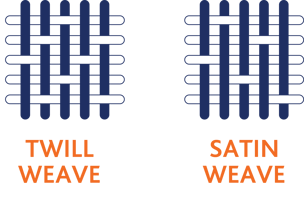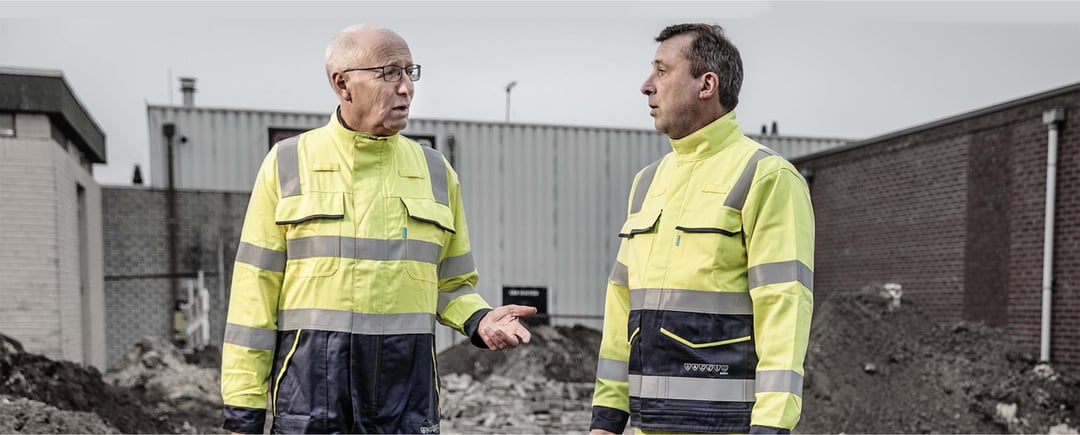There’s a delicate balance to find when selecting FR protective workwear: your garments need to meet high safety standards, but also provide maximum comfort to the workers who’ll wear it all day long. Which type of FR fabric will hit the best balance for you? To help you decide between your options, here’s a comparison of the different elements of comfort in inherent FR and FR treated fabrics.
1. Weight
The first key element of comfortable protective garments relates to the weight of the fabric they’re made from. As you can imagine, a worker’s freedom of movement is quite dependent on how light — or heavy — their protective clothing is.
- FR treated
FR treated fabrics typically weigh in on the heavier side of the spectrum, but different weight classes give you a variety of options to consider. The lightest option, for instance, weighs around 250g/m2, making it possible to still select FR treated workwear suitable for warmer climates or summertime. - Inherent FR
Inherent FR fabrics are woven from fibres such as aramids and modacrylics which already have intrinsic FR properties, removing the need for additional FR treatment. The advantage of inherent FR fabrics is that you can go to even lower weights, as little as 160g/m2. These lower weights are often used for shirts. Please be aware there is a different price tag between the two technologies (see our blog FR treated or inherent FR; what is the difference? for more details). Therefore, when deciding between the two, it can be helpful to ask yourself, “How much is comfort worth to my company?”
2. Softness & flexibility
The most comfortable fabrics feel soft and supple, moving with the wearer on the job. Inherent FR and FR treated fabrics achieve this characteristic in different ways.
- FR treated
Type of fibre blend has a primary influence on the overall softness of FR treated fabrics. These fabrics get their flame resistant properties from a special treatment absorbed by the cotton in the blend. While cotton itself is soft, the addition of the FR treatment can result in a stiff and bulky fabric. Until now, it’s been nearly impossible to replace cotton with softer alternative fibres such as TENCEL™ Lyocell, but with improved technology, who knows what’s on the horizon? Engineering a different fabric weave is another way to help rougher FR treated fibres feel soft to the touch. Softer and smoother than twill, satin is an increasingly popular weave choice within FR treated.
A satin fabric weave construction for a better feeling
of softness compared to a twill weave. - Inherent FR
Inherent FR fibres vary in their softness (aramids such as Kevlar®, for instance, are relatively coarse, while modacrylics are softer). Blending them with fibres such as cotton, nylon, or TENCEL™ Lyocell can result in very smooth and supple garments that are comfortable to wear.
3. Breathability & moisture absorption
In a hot or strenuous work environment, heat can build up inside protective workwear. The most comfortable fabrics will transmit heat away from the body, while absorbing and dispersing sweat. No one enjoys wearing a garment that’s soaking wet on the inside!
- FR treated
While cotton is known for its ability to absorb moisture, the polyester it’s often blended with in FR treated fabrics is what supports sweat dispersion. Striking the right balance between moisture uptake and breathability therefore depends on finding the best fibre blend for your needs within your budget. - Inherent FR
Aramid and modacrylic fibres are inherently FR, but they’re not very absorbent in and of themselves. Blending them with cotton or other natural fibres such as TENCEL™ Lyocell results in a highly breathable fabric that provides the wearer with excellent moisture management. This keeps workers cool, dry and comfortable.
Comfort at every price point
As you consider all the different elements of comfort within FR treated and inherent FR fabrics, you might be wondering, “Why prioritize comfort in the first place?” Here’s the thing: the more comfortable the protective clothing, the more likely your workers are to comply with wearing it. That’s why it’s always worth taking comfort into consideration when selecting the FR protective fabric that’s best for your company’s needs.
With technology moving at the pace it is, comfortable FR protective clothing will soon be available for every budget, whether you choose a FR treated or inherent FR solution.



![Voice of the wearer [EN]](https://eu.tencatefabrics.com/hs-fs/hubfs/EU%20-%20Images%20website/EU%20-%20Mock-up%20nieuwe%20afmetingen/Voice%20of%20the%20wearer%20%5BEN%5D.png?width=170&name=Voice%20of%20the%20wearer%20%5BEN%5D.png)



.png?width=399&name=Risk%20management%20for%20PPE%20clothing%20in%20the%20EV%20and%20battery%20industries%20(5).png)
